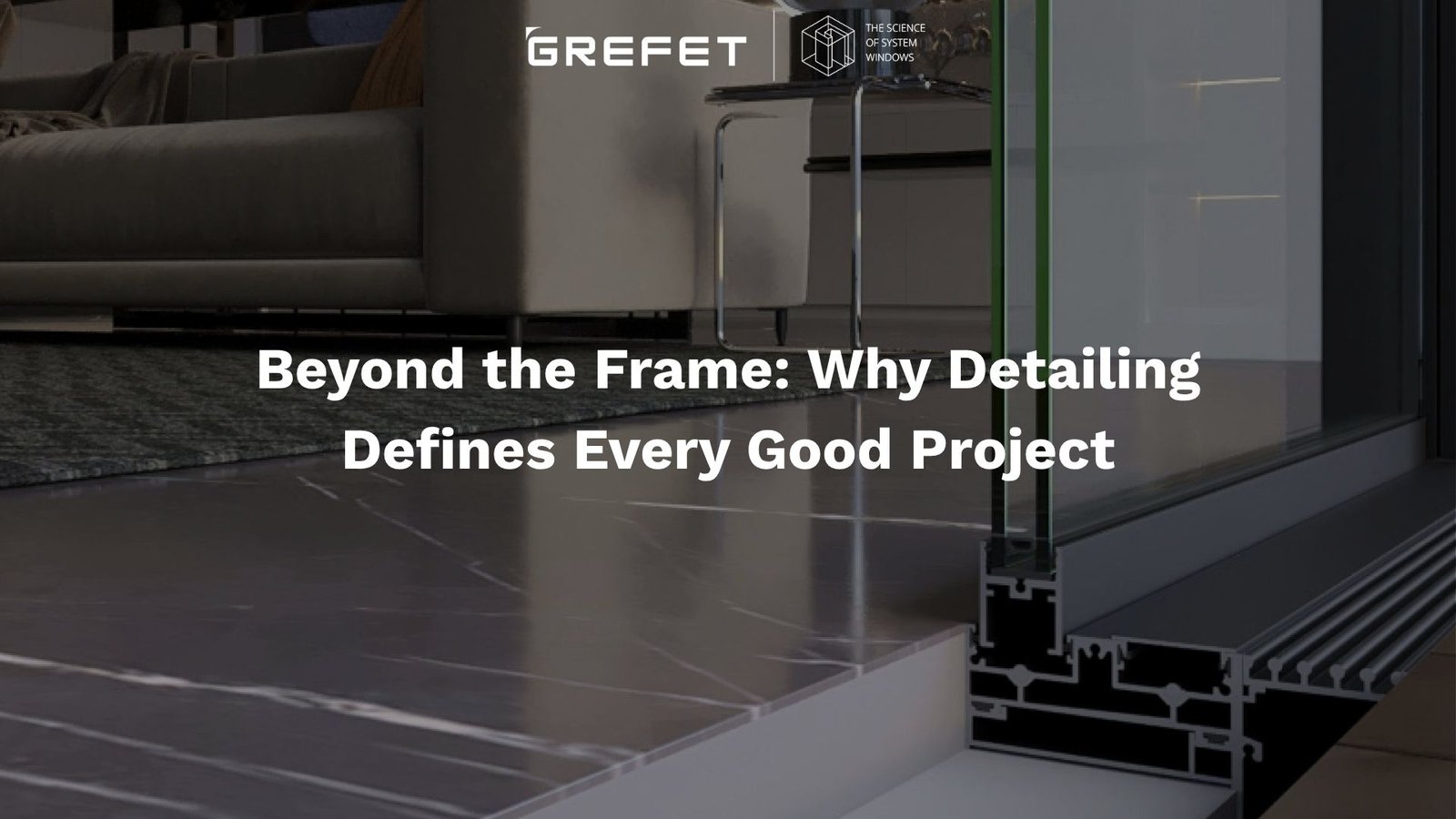In architecture, it’s easy to get caught up in grand concepts, scale, material, light, and space. But the truth is, what separates a good project from a great one often lies in the smallest things. Beyond the frame: why detailing defines every good project is not just a design philosophy; it’s a discipline that ensures intent becomes reality.
At GREFET, we’ve seen that detailing is where drawings turn into experiences. It’s what allows aluminium systems to perform, last, and express the architect’s vision with precision.
1. The Power of Precision
Every architectural idea, no matter how beautiful, is only as strong as its execution. Detailing bridges that gap, it’s how design intent turns into buildable, functional reality.
Good detailing ensures:
- Alignment between joints, profiles, and glass edges
- Perfect sightlines across windows and doors
- Consistency between design drawings and on-site installation
- Long-term reliability of the system
At GREFET, we design each aluminium system with millimetre-level accuracy, because precision is what turns architecture into craftsmanship.
2. Beyond Looks: Performance Is in the Details
The beauty of a system is only the surface. Performance comes from the invisible layers of engineering behind it.
Every high-performing window or door system depends on details like:
- The right EPDM gaskets for airtight sealing
- Drainage paths to prevent water stagnation
- Thermally insulated windows for insulation and comfort
- Hardware positioning for balance and smooth operation
Each of these elements directly impacts:
- Air and water tightness
- Acoustic comfort
- Longevity of finishes and fittings
At GREFET, these aren’t optional upgrades, they’re part of our core system design and are pre-tested under laboratory conditions before deployment.
3. The Art of Minimalism
Minimal design looks effortless, but it’s anything but simple. Achieving clean lines and light frames requires obsessive detailing.
To make a window look minimal yet strong, systems must:
- Maintain ultra-slim profiles without losing rigidity
- Conceal drainage and hinges seamlessly
- Align corner joints with perfect precision
- Ensure uniform glass alignment and edge finish
GREFET’s aluminium systems embody this balance, every joint, gasket, and screw hidden in plain sight, serving both function and aesthetics.
4. Why System-Based Design Wins
System-based aluminium design ensures repeatability, performance, and control. It eliminates the guesswork that often comes with local fabrication.
Here’s why system detailing outperforms conventional fabrication:
- Every component follows a tested design logic
- Tolerances and fitting guidelines are standardized
- Accessories and profiles are pre-matched for compatibility
- Performance is consistent across multiple projects
At GREFET, system detailing starts early, with technical drawings, fabrication manuals, and hands-on training for certified partners. That’s how every GREFET window looks, feels, and performs exactly as designed.
5. Collaboration Is a Detail Too
Great detailing happens through collaboration. Architects, system suppliers, and fabricators must think as one team.
Our detailing process includes:
- Reviewing architectural drawings early in the design phase
- Suggesting junction and sill details that improve performance
- Sharing shop drawings for alignment between trades
- Providing on-site installation support for precision execution
This approach makes sure the final build mirrors the original design—without compromises or improvisations.
6. Durability Is Hidden in the Details
Durability doesn’t come from heavy materials alone, it’s the detailing that holds everything together.
Long-term performance depends on:
- Correct choice of sealants and gaskets
- Profile thickness suited for local wind and load conditions
- Effective drainage slopes for water management
- Proper hardware calibration for smooth operation over years
GREFET systems are tested under wind load, water pressure, and air infiltration standards, ensuring they remain stable through India’s diverse climates.
7. The Design Legacy
The projects that endure are the ones that were detailed with care. A decade later, you don’t see the material, you see the precision, the proportion, the thought.
Why detailing builds legacy:
- It preserves design integrity through time
- It minimizes maintenance and rework
- It makes the architecture age gracefully, not visibly
At GREFET, detailing is not just a part of design, it’s the DNA of it.
The GREFET View
Beyond the frame: why detailing defines every good project reminds us that great design doesn’t stop at the drawing board. It’s built on millimetres, tested through performance, and executed with discipline. At GREFET, every system reflects this philosophy, because architecture deserves precision that lasts.


